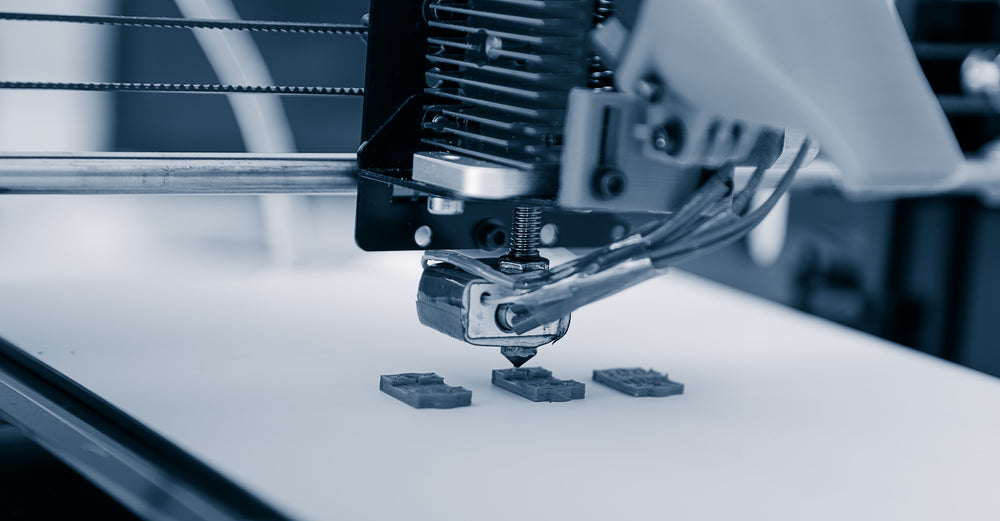Four Advantages of Additive Manufacturing Technology
Additive manufacturing technology offers four potential advantages over traditional production methods

First, it can print virtually any three-dimensional shape, giving designers the freedom to create parts that perform better or cost less than traditional alternatives. For example, Airbus produced an additively manufactured titanium bracket that was 30 percent lighter than the previous part without compromising performance or durability.
Second, because no molds or fixed tooling are required, each part produced by the machine can be unique, paving the way for mass customization. Test equipment manufacturer Vectoflow uses additive manufacturing technology to produce custom probes for fluid flow measurement applications. Its micro-laser sintering process gives the compact and complex design a streamlined shape to reduce the impact on the fluid being measured. Probes are manufactured in a range of materials to suit the required operating environment, including stainless steel, titanium and various superalloys.
Third, time-consuming tool manufacturing and machining operations are eliminated, accelerating product development and production and reducing time to market. The complex fuel injector head used in the latest Ariane 6 rocket is an additively manufactured nickel-based alloy. This component was previously welded together from 248 individually machined parts.
Finally, additive manufacturing can simplify maintenance and support of products by producing parts on demand from digital files, which can reduce the need for spare parts inventory. For example, automaker Mercedes-Benz now uses additive manufacturing technology to produce spare parts for classic cars.
By 2020, 40 years after the first commercial 3D printers were developed, an analysis of the additive manufacturing industry shows that it has grown into a €13.4 billion industry, with an annual growth rate of 22%. The industry remains extremely dynamic, with more than 200 players competing to develop new hardware, software and materials.
Rapid innovation is driving major improvements in the performance of additive manufacturing technologies. The latest generation of machines is pushing many limits, allowing, for example, the production of suspended parts without the need to print support structures, or the creation of stronger parts by using magnetic fields to control the arrangement of fiber reinforcement. The range of materials available for additive manufacturing systems continues to expand, including high-strength aluminum alloys and medical-grade polymers.
The speed of additive manufacturing systems is also increasing. Recent systems based on selective laser sintering (SLS), for example, use up to one million laser diodes to accelerate part production. And improvements in software and post-processing technologies are further streamlining the end-to-end process from concept to finished part. Additive manufacturing technology pairs well with innovative design systems, and even uses artificial intelligence techniques to define and optimize part geometry.
In many areas, additive manufacturing has been widely accepted as the fastest and most cost-effective way to produce functional prototypes during product development and testing. Additive manufacturing technologies are also being used in a growing number of "indirect" applications, including tooling, spare parts and fixtures.
Four Barriers to Additive Manufacturing

However, while direct manufacturing of final products using additive manufacturing has begun, large-scale adoption of this approach is still limited. Manufacturers cite four important barriers they encounter when using additive manufacturing
Hardware. Most additive manufacturing machines are slow and have limited manufacturing volumes, limiting the range of possible applications. Such machines have also proven difficult to integrate into production workflows. An industrial additive manufacturing production cell may require the user to combine manufacturing, post-processing and material handling equipment from different suppliers.
Software. Additive manufacturing equipment often relies on vendor-specific control software, with limited integration between different machines or with equipment and production control systems used in the broader factory. The technology and knowledge required to achieve consistent quality and stable productivity is difficult to obtain.
Materials. Today, even common engineering materials are much more expensive if they are made into forms suitable for processing by additive manufacturing equipment. Polymers must be developed specifically for additive manufacturing equipment, which is a time-consuming and complex process. And the additional processing required to convert metal alloys into a powder form suitable for additive manufacturing adds significantly to the cost. In addition, there are not enough additive manufacturing materials (especially polymers) to adequately certify in critical end-use applications.
Service. Industrial users complain that equipment suppliers do not currently provide a high level of technical support beyond that required to install and commission equipment. Users want more help, for example, refining component designs to fit specific manufacturing processes or finding ways to improve machine quality, reliability, and productivity once production begins.
Finally, manufacturers are having a hard time figuring out how additive manufacturing will benefit them. Designers also have limited knowledge of the capabilities of additive manufacturing systems and how to design for additive manufacturing. There are few benefits to simply converting an existing part from a traditional manufacturing process to an additive manufacturing process. Instead, benefits arise when the unique capabilities of additive manufacturing are utilized, such as combining multiple features into a single part to reduce the total number of parts in an assembly, or eliminating the need for subsequent manufacturing or process steps.
Today, the risks of industrial-scale additive manufacturing installations are all borne by the end user. And these barriers can make the business case for direct manufacturing using additive manufacturing technologies extremely difficult. Overcoming these barriers is a challenge for the entire industry. For example, equipment manufacturers can make further improvements in speed, end-to-end automation, and integration with existing manufacturing systems, while material suppliers can address issues related to certification, availability, and cost.
However, ambitious manufacturers do not need to wait for the additive manufacturing industry to do all the work. Despite the limitations, some industrial users have already made significant progress in direct production using additive manufacturing, and the knowledge and capabilities developed along the way will serve them well as the industry evolves.


Leave a comment